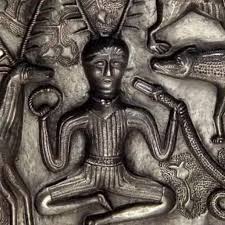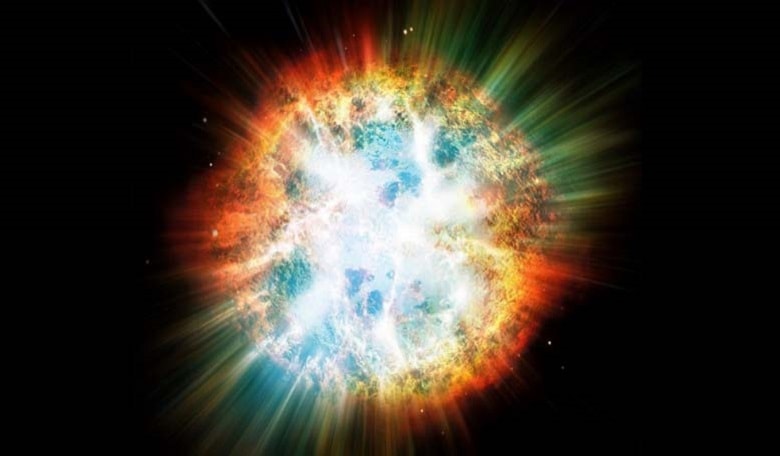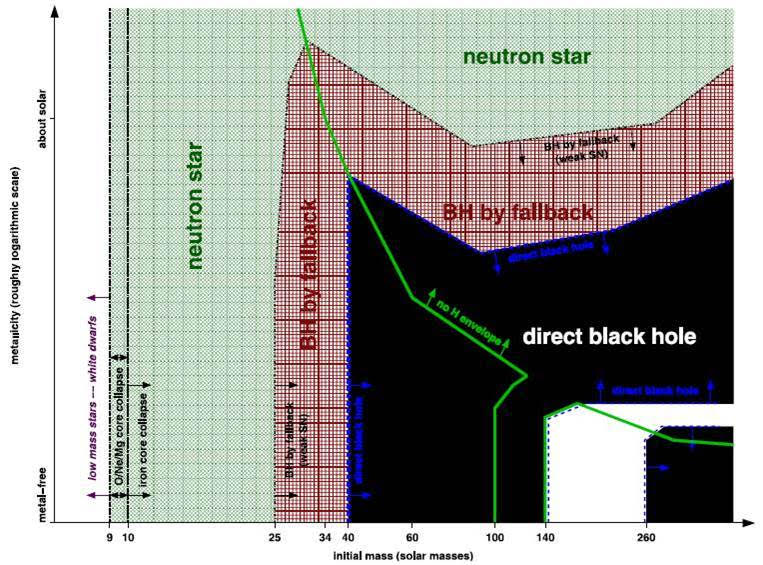Julian Date: 2459004.16
2019-2020: CLXI
THE DAILY ASTRONOMER
Thursday, June 4, 2020
Remote Planetarium 48: Stellar Evolution II
The core of every active star is a thermonuclear fusion furnace. Within the core lighter elements are fused to form heavier elements. This process generates radiant energy that migrates out of the core through the star's outer layers and then into space. Whenever you see sunlight, you're observing energy that originated in the solar core about 300,000 years before. Although stars seem immortal relative to our brief mortal lives, they all have finite life spans as their fuel reserves are also finite. They only have so much fuel to fuse before they perish. Of course, even the most short lived stars will persist for a few million years. Counter intuitively, the more massive the star the shorter its lifespan.
The more massive stars expend their fuel reserves far more quickly than the low mass stars.
The following list shows a sample of main sequence lifetimes (the amount of time a star of a given mass remains on the main sequence before evolving away from it.)
[Note: a solar mass equals the mass of the Sun. For instance, a 3 solar mass star is three times as massive as the Sun.]
- 60 solar masses 3 million years
- 30 solar masses 11 million years
- 10 solar masses 32 million years
- 3 solar masses 370 million years
- 1 solar masses 10 billion years
- 0.1 solar masses 1-2 trillion years
Yesterday, we learned the Sun's fate after it exhausts its hydrogen reserves. It will expand to become a red giant and its core will start fusing helium to produce carbon. As the Sun is not massive enough to produce the core pressures and temperatures necessary to ignite carbon fusion, it will expel its outer layers to form a planetary nebula. The core will then form a white dwarf, a stellar remnant that will slowly cool to become a black dwarf.
Not all stars follow the same life cycle, however. Stars that are at least eight times as massive as the Sun undergo more complex changes before they end their lives. First of all, more massive stars are able to produce the core temperatures necessary to fuse carbon and other heavier elements. [Next week we will be devoting an entire class to these element-creating fusion reactions, a process known as stellar nucleosynthesis. Today we're focusing solely on the stellar evolutionary track.]
The most massive stars will experience multiple phases of fusion reactions. Hydrogen into helium; helium into carbon; carbon into oxygen or nitrogen or another product. Various other fusion reactions will then occur in multiple stages until the star's core collects iron heated to three billion degrees! Iron is the end point of these reactions because iron fusion is endothermic. The energy invested into this reaction is greater than the energy the reactions impart back into the star. All lighter element reactions produce more energy than is required to produce them. (The hydrogen to helium reaction is the most energy efficient.) Consequently, when a star collects iron in its core, the balance between the star's gravitational contraction and outward energy pressure is violently disrupted. The outer layers collapse down onto the star's inner region so quickly that the gravitational potential energy is converted into kinetic energy resulting in an explosion called a Type II supernova.
A type II supernova explodes from the inside out. The supernova energy produces all the elements heavier than iron. It also disperses this heavy element material throughout its local region, chemically enriching the interstellar medium within its vicinity.
What happens next depends on two factors: the star's mass and metallicity.
Metallicity refers to the star's "metal content." The astronomical definition of "metal" is profoundly different from the chemical definition. Astronomically, a metal is any element heavier than helium. During the earliest epochs of star formation, the Universe consisted primarily of hydrogen and helium with scant traces of slightly heavier elements. The first stars would have formed only out of clouds consisting of hydrogen and helium. They and other stars that also form from hydrogen and helium are considered metal free. The metal content of any star depends on its 'population.' Astronomers recognize three distinct stellar population types:
- POPULATION I: "metal rich" stars. They are comparatively young, They formed out of interactions between heavy-element laden supernova debris and gas/dust clouds. They tend to revolve around the spiral arms of the Milky Way Galaxy. The Sun is a perfect example of a Population I star.
- POPULATION II: "metal poor" stars. These stars formed much earlier when the nebulae were not as chemically enriched as they were when the later Population I stars formed. Population II stars are typically located around the galactic nucleus and in globular clusters in particular. Globular clusters are large, old, globe-shaped star clusters located in the galactic halo.
- POPULATION III: the very first stars. This population is hypothetical, meaning none have yet been observed. They would have been highly massive and therefore lived briefly. These stars consisted of hardly any metals, except for any metals ejected by Population III star supernovae.
-Stars that are up to nine times more massive than the Sun will end their lives as white dwarf stars. More massive stars will form one of two objects: neutron stars or black holes. [We'll be discussing these objects in greater detail in a later class.]
-Stars between 9 - 25 times more massive than the Sun will end their lives as neutron stars. Neutron stars are the densest objects in the known Universe. When the stellar remnant is more than 1.4 times as massive as the Sun, the gravitational compression overpowers the electron degeneracy that sustains the shapes of white dwarf stars. The object is then compressed down to a much smaller volume. If the progenitor star is between 9 - 25 times as massive as the Sun, neutron degeneracy will halt further collapse to produce a neutron star. While a white dwarf is about the size of a planet, a neutron star's size is that of a city. Even the largest cities are minuscule compared to the size of Earth.
-Stars 25-40 times more massive than the Sun can either become a neutron star or a black hole "by fallback," depending on their metallicity. Stars toward the lower end of this mass range will become black holes by fallback unless they have comparatively mid to high metallicities. Stars at the mid to upper range will only become neutron stars if they have high metallicities. A black hole is a region where the gravitational attraction is powerful that nothing can escape from it, not even light. [We will be devoting an entire class soon just to black holes.] A black hole by fallback occurs when the material within a star starts to push outward after the supernova explosion, only to collapse back onto the core to form the black hole.
-Stars more than 40 times more massive than the Sun will either become a black hole directly (immediate without any fall back), a black hole by fall back or a neutron star depending on the star's metallicity. Refer to the chart below. For instance, a metal free star of 60 solar masses will become a black hole directly, whereas a 60 solar mass star with a high metallicity will form a neutron star. Note: Some stars are now believed to be able to form black holes without an associated Type II supernova.
[The blank space between 140-260 solar masses refers to a region of pair instability, a topic we haven't even mentioned yet and so won't discuss, at least for now.]
Next week we will discuss nucleosynthesis, neutron stars and black holes in much greater detail. Today, our aim was merely to explain how a star's mass determines its fate and what that fate will be.
To subscribe or unsubscribe from the Daily Astronomer:
https://lists.maine.edu/cgi-bin/wa?SUBED1=DAILY-ASTRONOMER&A=1




